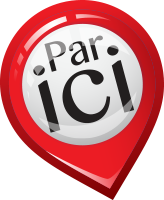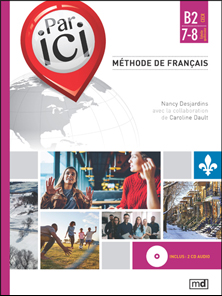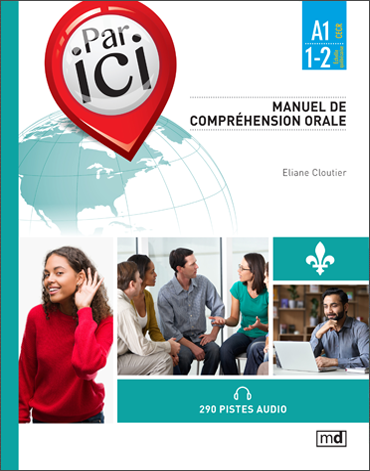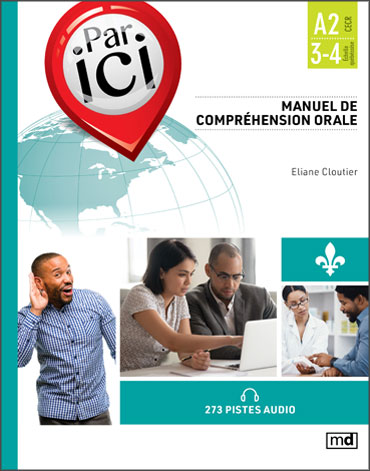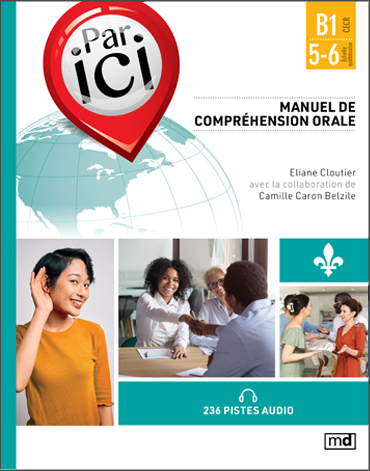THE FRENCH METHOD WITH A NORTH AMERICAN PERSPECTIVE
THE BASIC COLLECTION
Par ici is a French learning method entirely developed by Quebec teachers that encourages learners to apply newly-acquired language skills to real day-to-day situations.
Each workbook is designed to build the set of skills described in the Curriculum Guidelines (oral production, oral comprehension, written production and reading comprehension).
For each level, a supplementary exercise book and an instructional guidebook will be available.
Discover the French Method and the new series of Listening Comprehension Manuals.
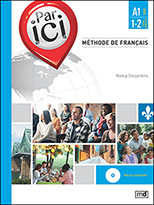
16 learning scenarios based on everyday life
31 communication objectives
4 self-assessments to evaluate progress
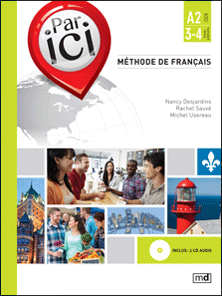
26 learning scenarios based on everyday life
68 communication objectives
4 self-assessments to evaluate progress
Preview a sample of Workbook A-1 / 1-2
Download PDFListen to an audio track (Workbook A-1 / 1-2)
Preview a sample of Workbook A-2 / 3-4
Download PDFListen to an audio track (Workbook A-2 / 3-4)
Preview a sample of Workbook B-1 / 5-6
Download PDF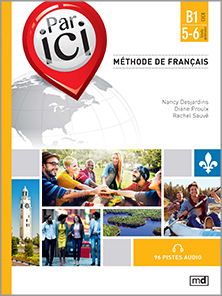
Listen to an audio track (Workbook B-1 / 5-6)
Discover Par ici
In this short video, author Nancy Desjardins details the purpose and structure of the Par ici method.
Discover Par ici
In this short video, discover the testimony of French as a Foreign Language (FLE) students who use the Par ici method.
WHAT PEOPLE SAY
“I’ve used the workbook in both organizations I’ve been teaching at this past year, and in my personal experience, the learners love it: it’s beautifully done, colorful, contemporary, and focuses on what’s really needed. I also like the section about phonetics and the audio tracks. The fact that it’s custom-made for Quebec is something that both teachers and learners can truly appreciate.”
Tania Longpré, Commission scolaire de Montréal (CSDM)
“As for me, I had it analysed by my students and soon-to-be FSL teachers as part of my didactics course. They were thrilled to discover a resource to make integration easier in Quebec. Using a grid we developed as part of the course, they analysed the resource according to various criteria and found very little ground for criticism. On the whole, they were delighted and eager to move on to the next levels!”
Virginie Doubli-Bounouna, Université de Montréal
“I have used Par ici with my students this summer and loved the fact that it’s consistent with the reality of Quebec. Students often bemoan the disparity between what they learn in class and what they hear on the street. So I think this method really fills an essential need.”
Laurence Jeudy, Dawson College
“Finally, something made in Quebec for beginner-level students! Not only is this material appealing, but its thematic progression firmly connects with students’ interests by focusing on real-life situations. Things like filling out forms, ordering at a restaurant, renting an apartment, or getting to know typical Quebecois phrases and idiosyncrasies (like moving on the 1st of July), and other North American realities (like clothing swaps). The approach to grammar is utilitarian rather than repetitive, which keeps things dynamic. In this sense, the included CD is perfect for students to fully integrate the material, audio or otherwise, to their own learning experience, while also favouring greater autonomy.”
Isabelle-E. Der Aprahamian, Vanier College
